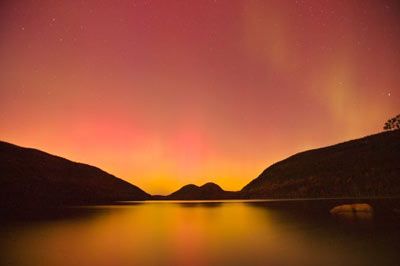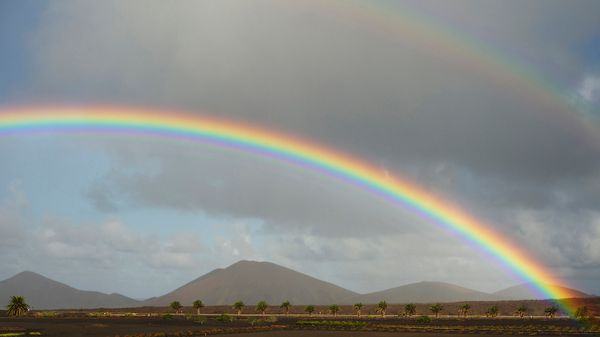The Science Behind the Blue Sky
Like bananas, atoms, molecules and particles in the atmosphere absorb and scatter light. If they didn't, or if the Earth had no atmosphere, we would perceive the sun as a very bright star among others in a sky of perpetual night. Not all wavelengths in the visible light spectrum scatter equally, however.
Shorter, more energetic wavelengths, toward the violet end of the spectrum, scatter better than those toward the longer, less energetic, red end. This tendency is due in part to their higher energy, which allows them to ping-pong around more, and in part to the geometry of the particles that they interact with in the atmosphere.
In 1871, Lord Rayleigh derived a formula describing a subset of these interactions, in which atmospheric particles are much smaller than the wavelengths of the radiation striking them.
The Rayleigh scattering model showed that, in such systems, the intensity of light scattered varies inversely with the fourth power of its wavelength.
In other words, shorter wavelengths (like blue and violet light) scatter a lot more than long ones when particles (such as oxygen and nitrogen molecules) are relatively small. Under these conditions, scattered light also tends to disperse equally in all directions, which is why the sky appears so saturated with color [source: Bohren].
Human Perception and the Color of the Sky
If we were foolish enough to look directly at the sun, we would see all wavelengths, because light would be reaching our eyes directly. That's why the sun and the area around it look white. When we look away from the sun, at the clear sky, we see light mostly from shorter, scattered wavelengths like violet, indigo and blue.
So why isn't the sky violet instead of light blue? The eyes have it. Your peepers perceive color using structures called cones. Your retinas bristle with about 5 million cones each, made up of three types that specialize in seeing different colors [source: Schirber].
Although each kind of cone is most sensitive to certain peak wavelengths, the ranges of the cone types overlap. As a result, different spectra and spectral combinations can be detected as the same color.
Unlike our auditory senses, which can recognize individual instruments in an orchestra, our eyes and brains interpret certain combinations of wavelengths as a single, discrete color. Our visual sense interprets the blue-violet light of the sky as a mixture of blue and white light, and that is why the sky is a lighter blue.


